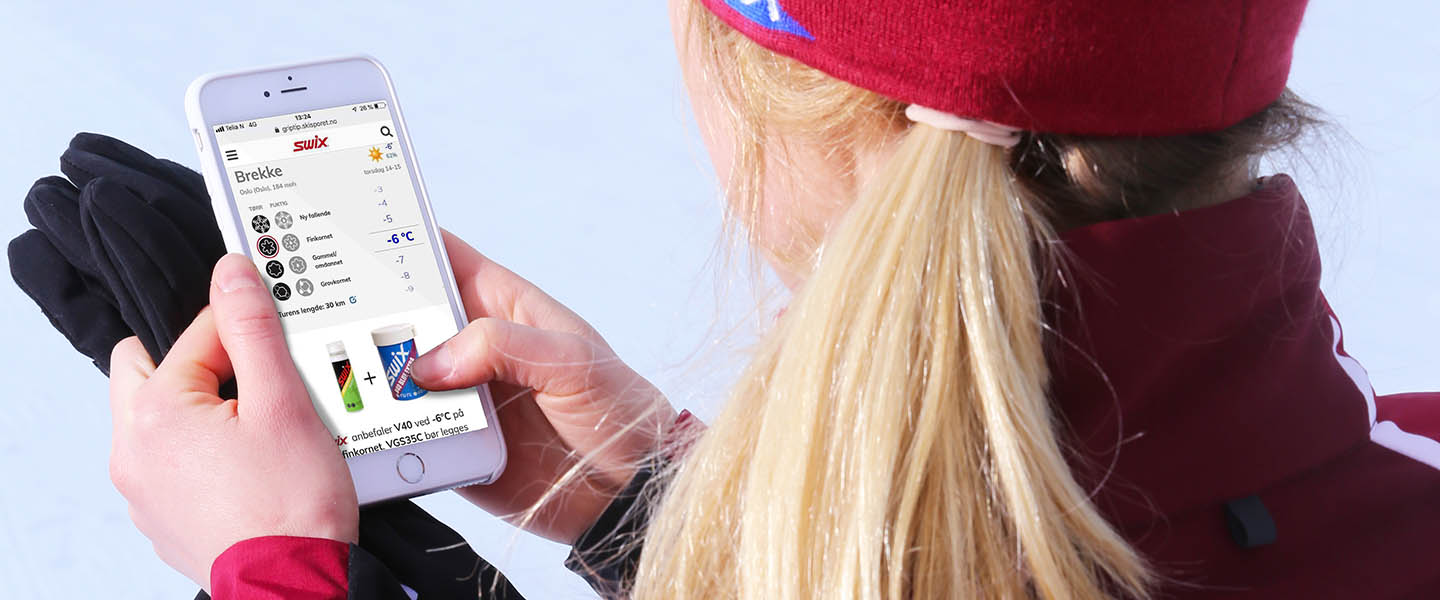Ski waxing - 4 easy steps to a firm grip
Ski waxing is actually very easy, only you do it right! This guide is for those who want to learn the basics of ski waxing and want to get a grip and good glide as quickly as possible.
Ski wax for beginners: How to ensure good grip on your skis
First things first: In order to attach your skis, you need to work with the attachment zone on your skis. The vast majority of sporting goods stores mark up the attachment zone for you, when you buy skis. If you don't know where the attachment zone is, we recommend a trip to a sporting goods store to have it measured.
The attachment zone is always in the middle of the skis, but the tension of the skis and your weight depends on how far you lubricate from the middle.
If you know approximately where your attachment zone is, just begin:
Step 1: Wash your skis
Start by washing your skis. You do this by tearing off a piece of the fibers, moistening it with Base Cleaner and washing away old ski lubrication. When the lubrication is gone, wipe with the fibers (without Base Cleaner). PS: We recommend that you keep your skis indoors or in a storage room when not in use.
See also Swix School: Learn all the tricks to get great skis
Step 2: Polish the attachment zone
Brush the fastening zone with sandpaper so that the sole becomes coarser and opens. In this way, the attachment zone becomes more susceptible to attachment lubrication. Feel free to use sandpaper belonging to this cork.
Step 3: Polish the attachment zone
Spray on primer in the attachment zone or warm in a layer of base wax. You must not have a grease iron, although it is recommended. You can cork in the ground wax instead of heating it in.
Step 4: Many thin layers of ski lubrication (attachment wax)
You have probably seen that the ski wax comes in different colors. This is to make it easier to choose the right ski lubrication at the right temperature. The basic principle looks like this:
- Green ski wax: Really cold conditions
- Blue ski wax: Down to -10 degrees
- Violet ski wax: A couple of sub-zero temperatures
- Red ski wax: From 0 degrees up to a couple of plus degrees.

Griptip: Our digital lubrication expert gives you tips for attachment lubrication, wherever you are
Note that there are different varieties of blue, violet and red. Therefore, read on the box what temperature it is suitable for. Recommended lubrication where you are in Norway can always be found on our digital lubrication expert Griptip. Griptip can also be found directly in the Ski Track app. It is important that you apply multiple, thin layers of today's ski lubrication in the attachment zone.
If Griptip recommends four layers of Blue Extra (V40), first apply a thin layer before using a cork to even out the ski lubrication in the attachment zone. Then repeat this process four to eight times. Swix has come up with a brand new range of fastening wax for competition and training. PS: Is the snow wet, transformed or "old" is often adhesive for attaching. We have created a sticker guide you can read here.
Recommended products
How to get the easiest possible good glide
Although it is regularly important to saturate the sole by melting in sliding blocks with a grease iron, you can use a liquid (fluorine-free) glider as an everyday product to get a better glide on your skis. Liquid gliders are also adapted to different temperatures, so check the thermometer before spraying on your skis.
Remember: On classic skis, gliders should only be applied in front of and behind the attachment zone, never in the fastening zone itself.
On skate skis, gliders must be applied to the entire ski. If you follow the procedure below, you will have a good glide for 30-50 km, before the process should be repeated.
Step 1: Spray on the glider
Spray on floating gliders either directly on the skis, or on a cap with felt - which you then drag over the slip zones, front and rear attachment zone on classic skis.
Step 2: Let dry
Let the slider dry for 15 minutes.
Step 3: Brush off
Brush off lightly with a blue nylon brush on the front and back slip zones. Brush in the direction out of the skis so that the slider does not end up in the attachment zone. Now all you have to do is enjoy your ski trip
Recommended products
Also read: Swix's Digital Lubrication Course for Beginners

